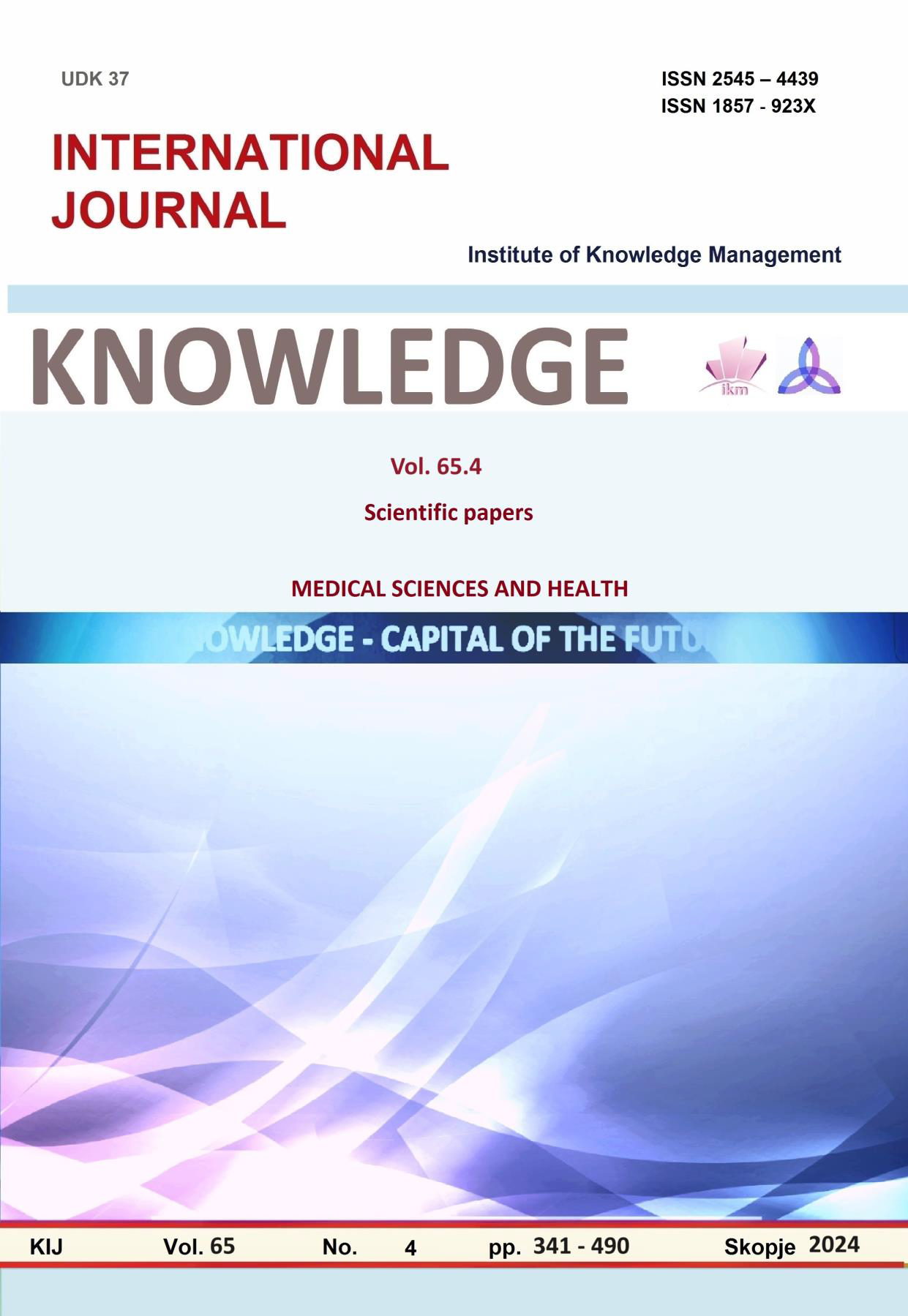APLASIО CUTIS CONGENITA: CASE REPORT
Keywords:
newborn, aplasio cutis congenita, medical oil treatmentAbstract
Background: Aplasiо cutis congenita is a heterogeneous group of disorders characterized by absence of skin layer in a localized or wide spread area at birth. Aplasio cutis congenita is rare anomaly within the newborn population. The incidence is approximately 3 cases in 10000 births. Etiological factors include influence of genetic factors, teratogens, compromised vasculature to the skin, infection, neural tube defects and trauma. Case report: In August 2022 a male infant was born with membranous type of aplasiо cutis congenita in the parietal skin area above the large fontanel, round, diameter 10 cm without associated malformations on the rest of the body. The lesion of the head was treated with medical oil, three times a day. After one month the lesion of the scalp was better; the superficial veins partially were obliterated and during this period only one episode of bleeding was recorded. The bleeding was stopped with local compression. After three months the lesion was completely resolved and only very thin blood vessels were noticed. During this period the baby was in good condition and proper weight gain. After discharge of the hospital, heart and brain ultrasounds were performed and they were normal. Follow up consultations with a dermatologist and a geneticist recommended continuous observation of the skin lesion and the development of the baby in general. Conclusion: The treatment of our case demonstrated that beside the very wide spread lesion on the scalp, we prevented: further destruction of the epiderm, bleeding from the very thin and fragile superficial veins, infection and achieved obliteration of superficial veins. The medical oil that was used in this particular case (lesion with diameter more than 3 cm) comprised of: butyrum bovis, skin lipids, pyrus malus fruit extract, pentylene glycol, stellaroides longibracteata leaf extract, tocopheryl acetate, tocopherol. These components have preventing effect of skin inflammation, healing of damaged skin and preservation of skin integrity.
References
Aditya Pratap Singh, Arun Kumar Gupta, Rajlaxmi Pardeshi and Arvind Kumar Shukla. (2018). Aplasia cutis congenital in a newborn: a rare case. J Indian Assoc Pediatr Surg, 23 (3), 175-177.
Belen Lozano-Masdemont. (2017). A case of membranous aplasia cutis congenital and dermoscopic features. International Journal of Trichology , 9(1), 33-34.
Frieden IJ. (1986). Aplasia cutis congenita: A clinical review and proposal for classification. J Am Acad Dermatol, 14, 646-60.
Hui‐Jun Lai, Mei‐Yan Lai, Ping‐Ping Ma and Hong‐Wei Guo, (2023). Aplasia cutis congenita in monozygotic twins. Skin Health Dis., 3(5), 270.
Ingrid Anne, Mandy Scheirz, Mario Gjuffre, Antonello Del Vecchio, Vincenzo Antona, Giovanni Corsello and Ettore Piro, (2020). Recognizable neonatal clinical features of aplasia cutis congenital. Italian Journal of Pediatrics, 46, 25.
J.S.Fryburg, K.E. Greer. (1993). Epidermal naevi and bullous aplasia cutis congenita in a neonate. J med Genet, 30(11), 962-963.
Laura Pajaziti, Syzana Rexhepi, Ylfete Shatri-Muca and Mybera Ferizi. (2009). The role of diclofenack on inducing of aplasia cutis congenital: a case report. Cases Journal, 2, 150.
Mona Aboutara, Axelvon der Wense, Miriam Fattouh, Konrad Reinshagen, Ingo Koenigs, (2021). Aplasia Cutis Congenita with Fetus Papyraceus (ACC type 5) – A Visual Diagnosis. Klin Padiatr, 233(02), 69-71.Sun, H Ibrahim, Aras F Kaan, Anarat Can, Guduk Mustafa. (2018), Aplasia cutis congenita a report. Neurology India, 66(2), 542-543.
Sae Yun Kim, Eun Sun Kim, Joonhong Min, Kyungyul Lee, (2022). A case of aplasia cutis congenital following fetal reduction of triplet pregnancy conceived through in vitro fertilization. The Turkish Journal of pediatrics, 64(1), 160-165.
Tahani Amgliah, Faiza Alghamdi, (2018). Aplasia Cutis congenital: a case report. Case Rep Dermatol, 10(2), 182-186.
V.Thadchanamoorthy, Kavinda Dayasiri, M.Thirukamar, N.Thamilvannan and S.H. Chandraratne. (2021). Multiple aplasia cutis congenital type V and fetus papyraceous: a case report and review of the literature. Journal of medical case reports, 15, 110.





